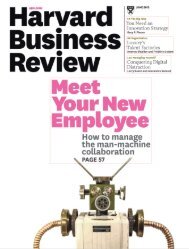+ + +
Create successful ePaper yourself
Turn your PDF publications into a flip-book with our unique Google optimized e-Paper software.
TECH<br />
SHINY | ONLINE ‘TREP | GEEK | THE FIX<br />
| ASK A GEEK |<br />
Social diver<br />
Q: Do better social media<br />
analytics really help?<br />
There’s an ever-growing<br />
range of companies offering an<br />
A: array of social media analytics<br />
tools, from entry-level platforms such<br />
as Hootsuite and Sprout Social to<br />
sophisticated stand-alone products<br />
like Socialbakers and Radian6.<br />
All of these products use an API<br />
to capture data—the exact same data<br />
already available to you and your business<br />
for free from Facebook Insights, Twitter<br />
Analytics and many other social media<br />
networks. The only differences between<br />
the native analytics and the more sophisticated—and<br />
expensive—options are the<br />
interface and the math used to calculate<br />
ambiguous metrics like “potential reach”<br />
and “engagement.”<br />
As it turns out, the more you pay,<br />
the prettier the interface, the sexier the<br />
reports and the more complex the math.<br />
How much “pretty” you need or can<br />
afford depends on your budget, the scope<br />
of your marketing effort and the nature<br />
of your business.<br />
To help you determine what’s right<br />
for your business, we turned to New<br />
Hampshire-based Katie Delahaye Paine,<br />
author of Measure What Matters and selfdescribed<br />
“measurement queen.”<br />
—Mikal E. Belicove<br />
Why should my company engage<br />
in social listening?<br />
If your customers are talking about<br />
you, you want to hear what they’re<br />
saying. If you’re spending good money<br />
to talk at them, why not devote some<br />
percentage to listening to what they<br />
have to say? Research shows that the<br />
conversations your customers have among<br />
themselves drive about 13 percent of<br />
business decisions and can amplify<br />
your advertising by 15 percent. What<br />
business owner wouldn’t want to be a<br />
fly on that wall?<br />
Are these expensive analytics tools<br />
good investments?<br />
You’ll first have to go through the considerable<br />
time and expense to conduct<br />
rigorous modeling ahead of time to ensure<br />
that the metrics provided by a third-party<br />
analytics program are meaningful to you<br />
and your business. Otherwise, you’ll just<br />
end up with a flood of data that you can’t<br />
really do anything with or trust.<br />
Assuming I do the modeling exercise<br />
you suggest, what features would I look<br />
for in a third-party analytics tool?<br />
Because you want the right data—not<br />
lots of data—you need a tool that filters<br />
out spambots, auto-retweets and payper-click<br />
results. Next, if the tool is<br />
providing sentiment analysis (i.e., classifying<br />
content as “positive,” “neutral”<br />
or “negative”), you need to go into the<br />
data to validate the sentiment. That’s<br />
because sentiment analysis tools tend to<br />
be keyword-driven, and a lot of keywords<br />
mean lots of different things. And finally,<br />
price is a factor. If you buy a cheap tool<br />
but have to invest tons of time cleaning<br />
up the data you get from it, you haven’t<br />
saved yourself any money.<br />
What’s next?<br />
The most important thing to consider—<br />
and then create—is a strategy to deal with<br />
what you hear from your social media<br />
feeds. How will you manage or redirect<br />
customer complaints, requests for service<br />
or sales inquiries? In social media time,<br />
you have about three hours before people<br />
start to get impatient and complain<br />
because “no one is listening.”<br />
Can I make do with the free metrics<br />
provided by social media platforms?<br />
Unless you’re doing the extensive modeling<br />
mentioned above, it’s best to stick<br />
to the free basic metrics provided by the<br />
social media platforms you use. This lets<br />
you easily decide which metrics matter to<br />
your business. For instance, a restaurant<br />
has very different goals for social media<br />
than a bank or car dealership. Two places<br />
to start are with revenue directly tied to<br />
social media or audience size. Once you<br />
decide which direction you’re going, you<br />
can figure out the most important role<br />
for social media. Is it to drive traffic to a<br />
website, generate leads or build customer<br />
engagement? From there, you can determine<br />
the metrics that matter to you.<br />
THE STAT: 18%<br />
The number of American adults planning to buy a wearable tech device<br />
such as a Fitbit or Apple smartwatch in 2015, according to market research<br />
firm Ipsos MediaCT.<br />
Source: Ipsos US Online Omnibus, October 2014<br />
ILLUSTRATION © ROMULDO FAURA<br />
56 ENTREPRENEUR MARCH 2015






